JELLYFISH – WORD OF ADVICE. As mentioned in previous post, It was previously only thought that Box Jellyfish, which are among the most poisonous in the world, were only found in the waters around Australia but in recent years there has been more and more evidence to suggest different. Box Jellyfish live in the island and coastal waters of Thailand and Malaysia; in fact, they exist throughout the Indo-Pacific region including Vietnam, Philippines, Indonesia and Australia.
As a family travelling to South-East Asia you are in for a wonderfully enriching experience. The safety of you and your child is obviously a priority so families usually travel prepared with insurance, first-aid kits and the like. However, we can’t control everything and unforeseen situations do arise. When they occur in remote, unfamiliar, unprepared places the consequences can be catastrophic. Make sure your paradise vacation stays and feels like paradise too.
JELLYFISH FACTS
There are around two thousand species of Jellyfish in the world but less than one hundred are considered dangerous to human animals. They are not in fact fish but invertebrates with none of the organs we would associate with higher life forms.
The most dangerous Jellies
The Box Jelly (aka Sea Wasp or Chironex Fleckeri; pictured above left and resulting scars right) – and 20 near relatives are found off the shores of Northern Australia, PNG, Malaysia, Indonesia, the Philippines, Thailand and Vietnam. Then there are 5,000 deadly stinging cells on each of its 10- 60, two meter long tentacles.
Some researchers believe that groups of Box Jellies deliberately herd small fish and crustaceans towards the shore in order to trap them, thus bringing them into contact with humans.
Problem shores are usually signposted, and this is one serious bubble pack to be avoided at all costs – the most poisonous creature in the world.
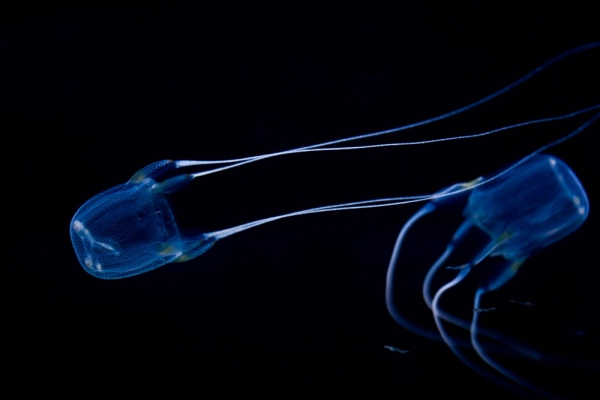
Box Jellyfish are recognized as one of the greatest marine hazards. They kill more people than sharks, crocodiles and stonefish combined. The Box Jellyfish is arguably the world’s most toxic animal and is responsible for over 5,000 human casualties over the past 50 years. These pestilent creatures reside mainly in the waters near Australia, Japan, Hawaii, and the Philippines. While a sting can be extremely painful, that should be the least of your worries as the toxins cause shock and heart failure, which either lead to death or drowning. The only real remedy is applying vinegar to the wound and removing any visible tentacles. Most attacks occur when the weather is warm and the ocean is calm, so beware.
Each year, in late summer, the adult box jellyfish spawn at river mouths before dying. The fertilized eggs become tiny polyps which attach themselves to rocks in estuaries. In spring these polyps develop into little swimming jellyfish which migrate down rivers, especially with rains, to feed on shrimp. Unfortunately, they frequent beaches which humans also find attractive. The animal does not actively hunt, relying on food to bump into its tentacles. A struggling shrimp might tear a delicate jellyfish, so it needs to be killed instantly, on contact, with a very strong poison.
A good majority of box jellyfish sting victims are children. Kids tend to run into the water, move quickly, jump and dive and splash about more than adults. Box jellyfish catch their prey of small fish and crustaceans in the sandy-bottom shallows, and while the animal has a vision system that alerts it to movement and obstacles so that it can avoid danger and move out of the way, it’s not that fast and kids quickly get caught up in sticky tentacles.
What’s a tragedy on one hand but good news on the other is that with the right information, proper precautions and correct treatment, most deaths and injuries could have and can be avoided.
Firstly, the locals know there are box jellyfish in the seas in the area. They also know that there have been stings. Tourism and hospitality officials also know. The Thai government has been providing information for years and encouraging, urging them to be proactive and avoid the very scenario that occurred on Saturday (23 August 2014). They have done nothing. They justify their inaction by saying stings are not so common – do you think the boy’s parents were interested in this when for them it was a moment of life or death?
The problem of course is that this is not always possible seeing the former while big is virtually transparent and the latter is absolutely tiny (10mm). Bumping into one – as they don’t attack – is the most likely form of contact.
The best way to avoid contact is to cover up when in water’s known or suspected to be habitat and while regular clothing could do the job, it usually flops around in the water and provides openings for tentacles and tiny animals.
As mentioned in a previous post lotions and creams have not been proven to protect against lethal box jellyfish but what has been successfully scientifically tested is stinger or lycra suits.
Full length stinger suits provide excellent coverage and protection from stinging tentacles and harmful UV rays. The tentacles find the lycra ‘distasteful’ and the animal soon peels off without firing stinging cells (nematocysts).
Stinger suits have dramatically reduced stings in tropical Australia where they are becoming increasingly common on beaches during stinger season (Oct to March).
Symptoms:
• Severe pain
• Headache, nausea, vomiting, diarrhea
• Skin swelling/wounds/redness
• Difficulty breathing, swallowing and speech
• Shivering, sweating
• Irregular pulse/heart failure
Stings treatment:
• pour vinegar over tentacles. Urine does not work on the Box Jelly or Irukandji.
• lift off any tentacles with a stick or similar.
• use pressure-immobilization on limbs if possible. I.e. quickly wrap a light bandage above and below the sting (if you can’t get two fingers under the bandage, it’s too tight).
• Immobilize/splint the stung area and keep it at heart level (gravity-neutral) if possible. Too high causes venom to travel to the heart, too low causes more swelling.
• Do not drink alcohol, or take any medicine or food.
•Perform CPR if required and keep going then seek medical attend
Links to latest unfortunate accident involving Box Jellyfish:
http://phuketwan.com/tourism/alarm-box-jellyfish-kills-tourist-langkawi-12107/
Irukandji (Carukia barnesi and several other unidentified species that produce Irukandji Syndrome) – also lurks in the waters of Northern Australia, mostly near Cairns and the Great Barrier Reef. Irregular sea currents can easily move it to the shore.
Irukandji is extremely painful and occasionally deadly and has been seen as far south as Brisbane. It’s mostly a problem from November – May, but has been recorded in all months except July and August.
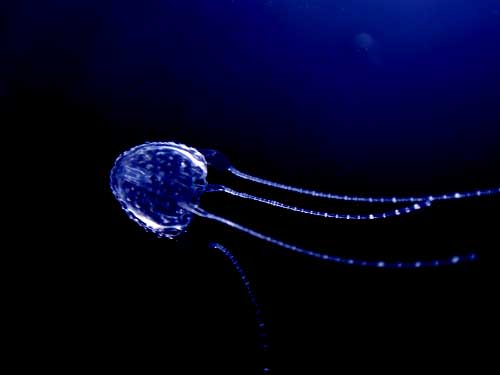
Symptoms (as little as 5 minutes after apparently mild stings)
• Lower back pain, intense headache.
• Muscle cramps and shooting pains, nausea, vomiting.
• Catastrophically high blood pressure.
• Restlessness and feeling of impending doom.
• Death from heart failure or fluid on the lungs.
Treatment
• pour vinegar over tentacles.
• lift off any tentacles with a stick or similar.
• compress the wound area with a bandage.
• take pain killers.
• get medical treatment as soon as possible.
Portuguese man-of-war/ the Blue-bottle
this is a sail bearing, windblown animal which travels the Atlantic, Pacific and Indian Oceans and may be blown inshore. The larger varieties may be occasionally fatal to humans but are not usually dangerous.
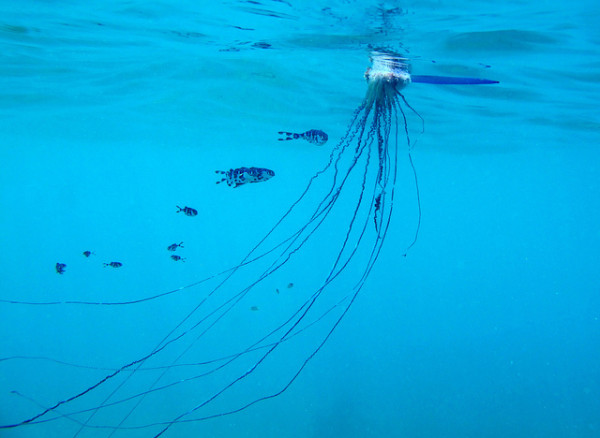
Treatment
• lift off any tentacles with a stick or similar.
• apply an ice pack
• apply a local anesthetic (sunburn cream/insect bite cream).
Mediterranean jellyfish
The stings are painful and unpleasant but not generally life-threatening, unless a swimmer has a weak heart, a severe allergic reaction or panics on encountering a shoal of Bobbies and drowns…
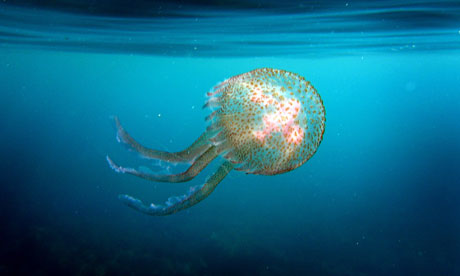
The cause of the Mediterranean stinger explosion is the usual suspect – global warming boosting water temperatures by a couple of degrees as well as increased pollution-derived nutrients and reduced cool freshwater entering from rivers. However, overfishing of anchovies (which compete with jellies for plankton salad), turtles and tuna fish (which eat jellies for dessert) has also aided the mauve climate avenger’s expansionist tendencies.
HOW TO AVOID JELLYFISH STINGS
• Take extreme precautions if you have an existing heart condition as Jellyfish deaths are normally attributed to cardiac arrest (or pulmonary congestion). You are in great danger from the Toxic Boxes’ venomous sting unless treated immediately as the pain is so excruciating that you may go into shock and drown before reaching the shore. So swim with a partner if possible.
• Avoid swimming in the October-May high-jelly season, especially in the seas north of Brisbane, in Northern Australia, and particularly around Cairns and the Whitsunday islands, especially in calm waters near the mouths of rivers, estuaries and creeks following rain. Also beware around PNG, Malaysia, Indonesia, the Philippines, Thailand and Vietnam.
• Wetsuits or Lycra ‘stinger suits ‘ offers good protection especially the sophisticated models with hands, neck and head coverage. Feet may be covered by fins or swimming shoes. Pantyhose are also apparently effective as the stings don’t ‘fire’ unless they feel skin.
• Take notice of warnings! Bathing areas prone to toxic jellies may have safety signs.
• Keep your eyes peeled when swimming in areas where the more dangerous variety live though’ your chances of seeing Irukandji are smaller than they are.
• Dead jellyfish on the shore may look like gelatinous blobs and they are, but while there is still moisture, there can be life in those old cells and you may be stung. Safety first! Don’t tread on them and don’t pick them up.
GENERAL TREATMENT
• rinse the area with sea water. Do not scrub or wash with fresh water which will aggravate the stinging cells. Do not pour sun lotion or spirit-based liquid on the area.
• deactivate remaining cells with a vinegar rinse before removing them; otherwise inactive nematocysts may be triggered. If no vinegar is available use urine – but NOT for Box jelly and Irukandji stings. Ask a mate for a golden shower! Really! Preferably male urine as it’s considered to be more sterile.
• lift off any remaining tentacles with a stick or similar.
• If cells still linger, dust with flour and carefully scrape off with a blunt knife.
• after all tentacle sections have gone, pain can be treated with a cold pack and/or a local anesthetic such as a sunburn lotion or insect bite treatment that lists ‘…ocaine’ as an ingredient.
• If there is continued swelling, or itchiness, apply a light steroid cream e.g. Hydrocortisone eczema cream.
• If muscle spasms persist see a doctor.

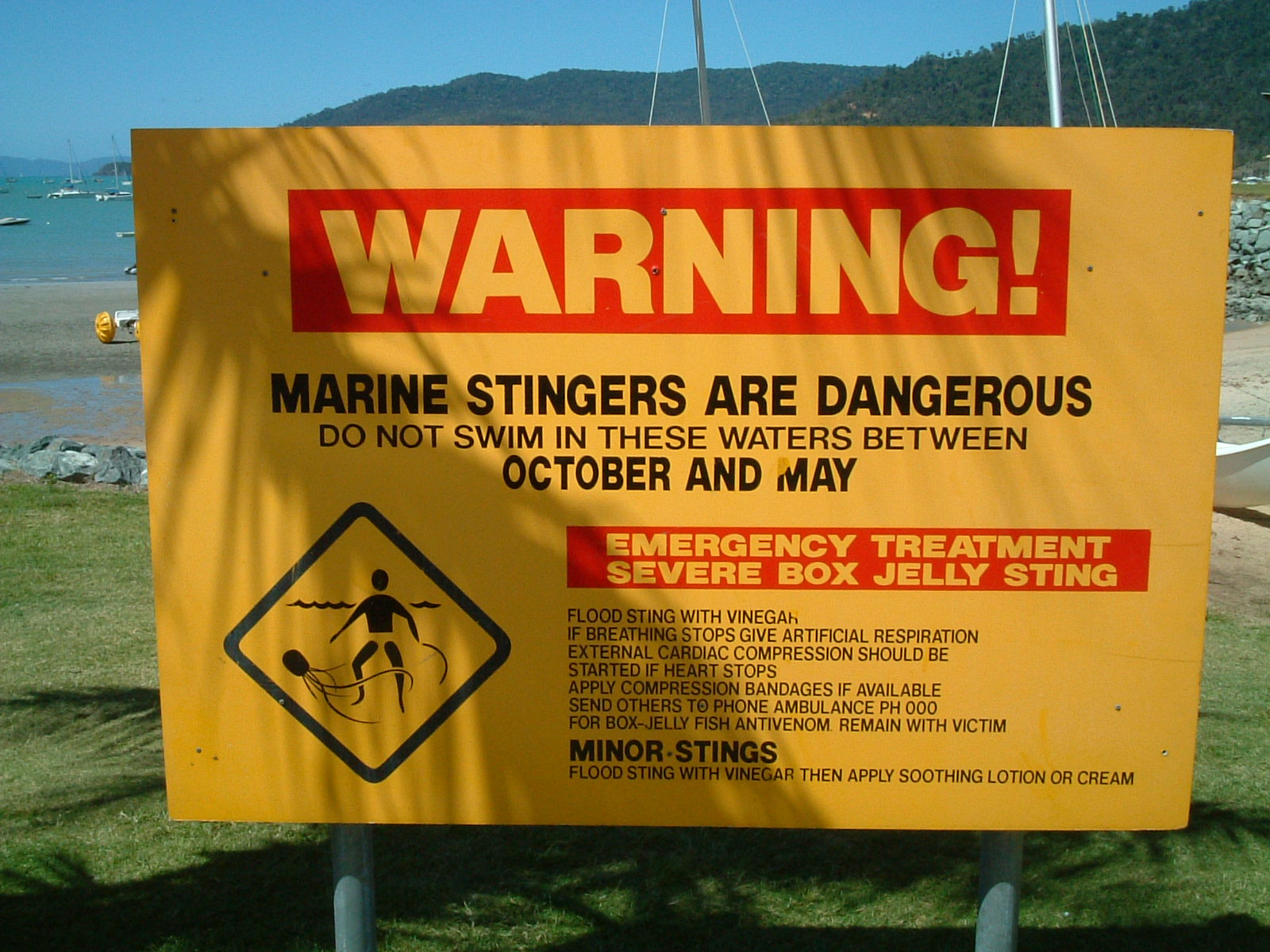



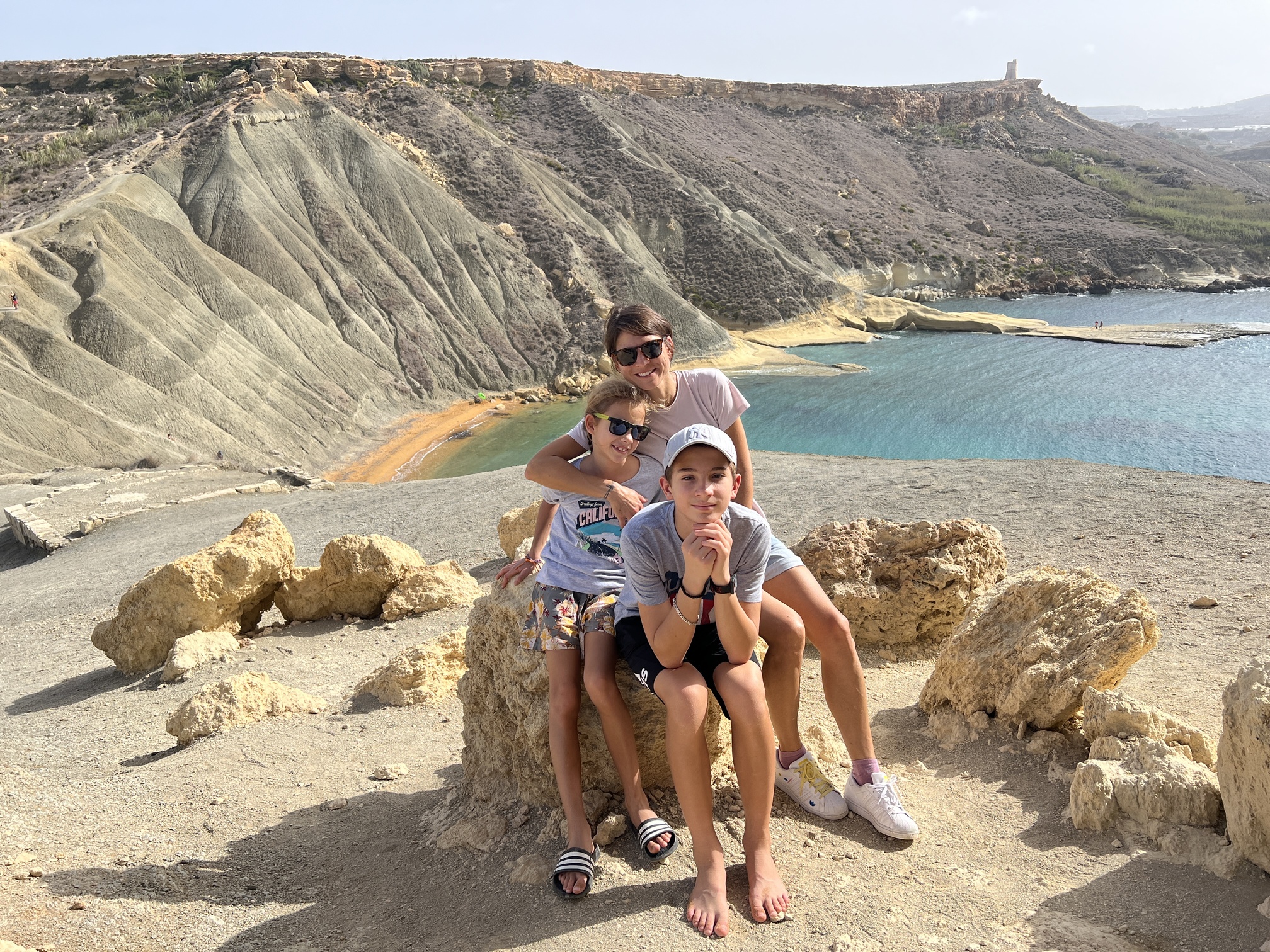


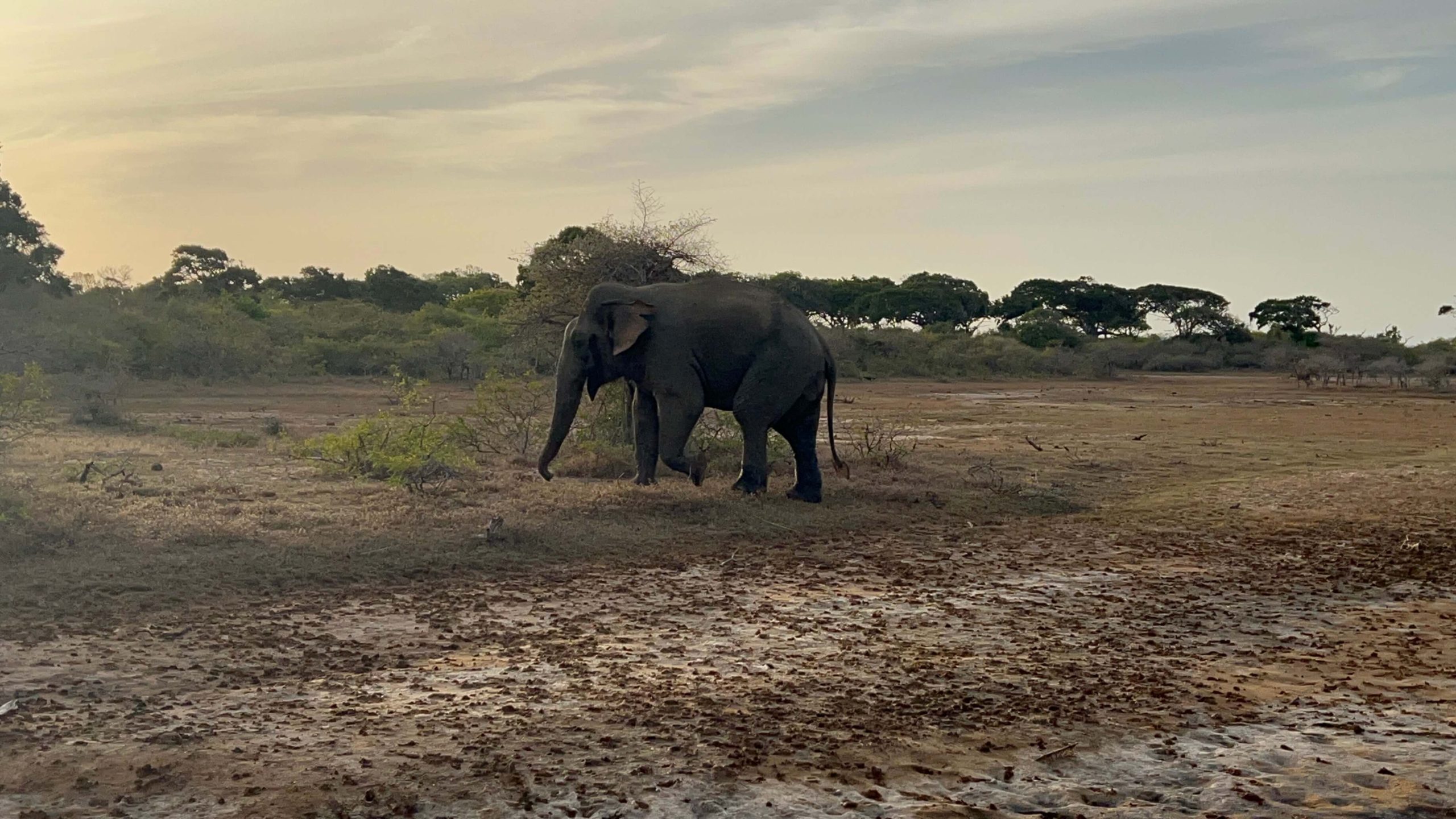
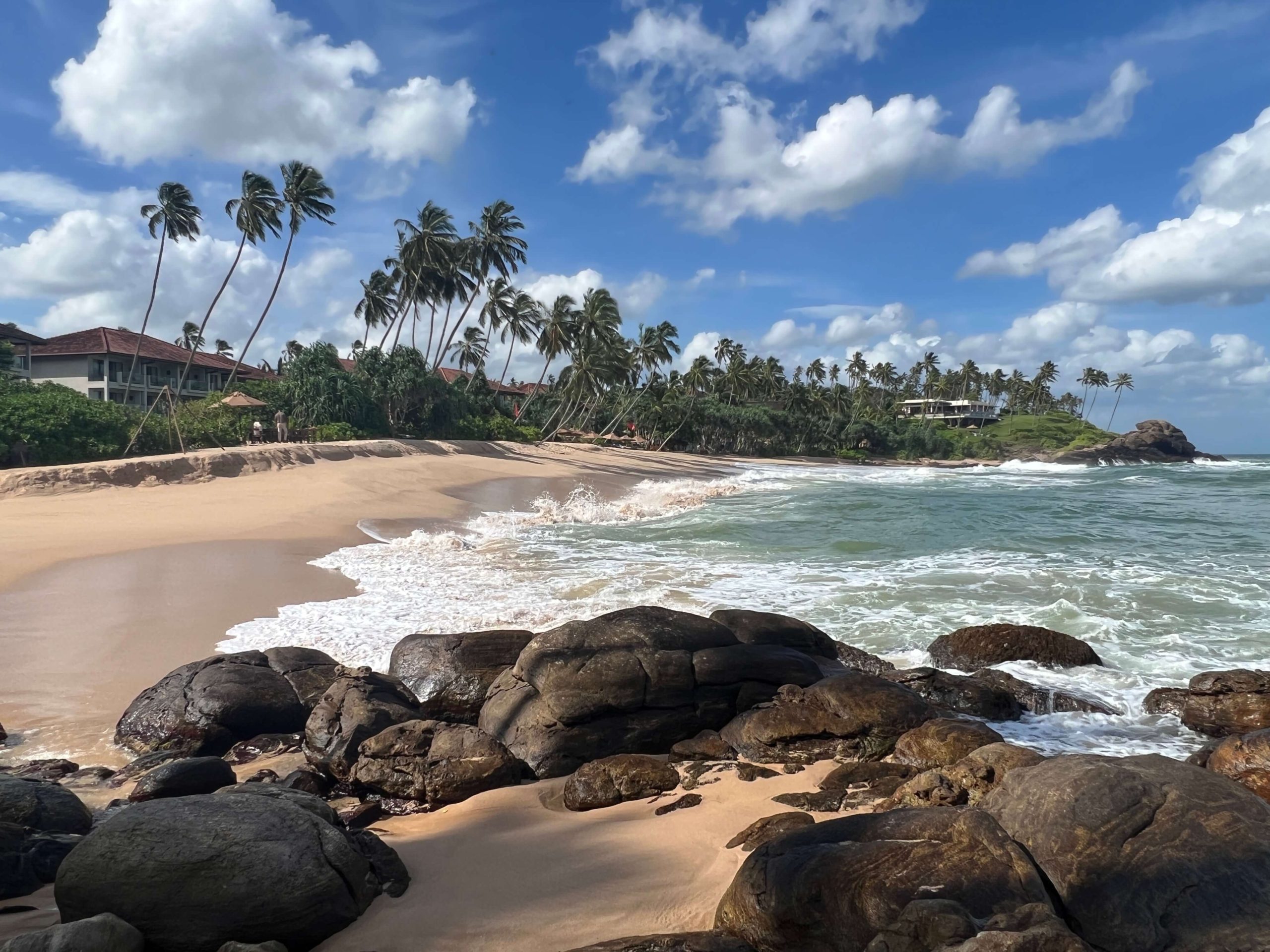


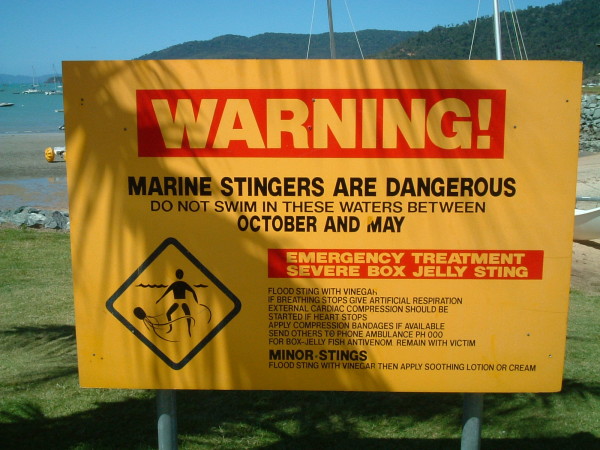

Great article on dangerous jellyfish in South-East Asia and tropical north Australia thanks! Families travelling with kids need to know the facts, not be turned off but be informed and prepared. Put your kids in a lycra suit folks! It stops all jellyfish stings from annoying sea lice to killer box jellyfish. Take a cheap bottle of vinegar to the beach, just in case.
Note that problem shores are NOT usually signposted. Some are. Don’t think you are safe if there is no sign. In the Indo-Pacific there is always a risk, though it is minimal.
Also a ‘fun’ fact, each box jellyfish has millions and millions of stinging cells with 800,000 of them per centimetre!
Hi Andy,
You are absolutely right! This summer we got stunged with non poisenus jellies on Malapascua Island in the Philippines. Thankfuly the kids were on a boat but still it wasnt pleasant experience.